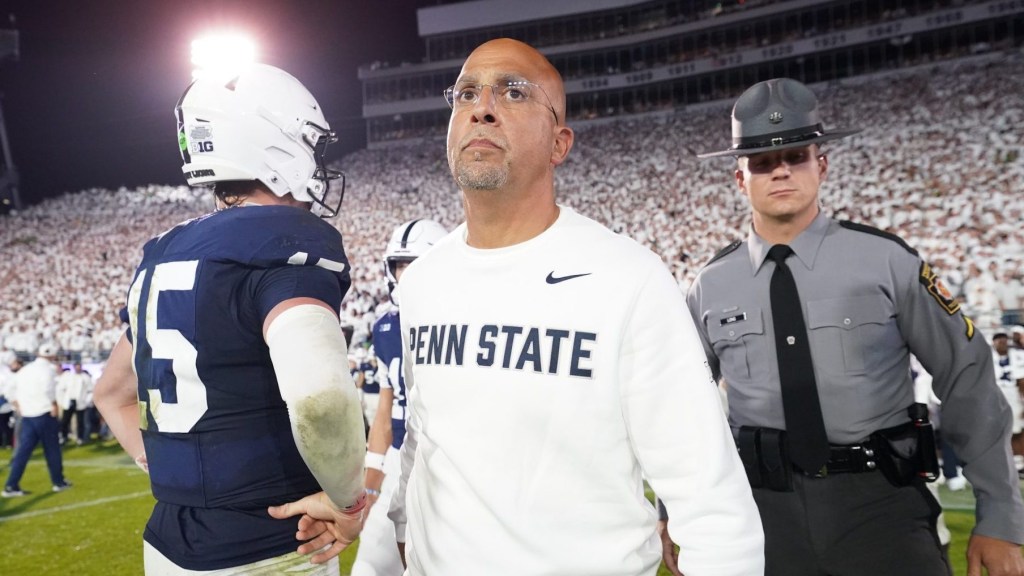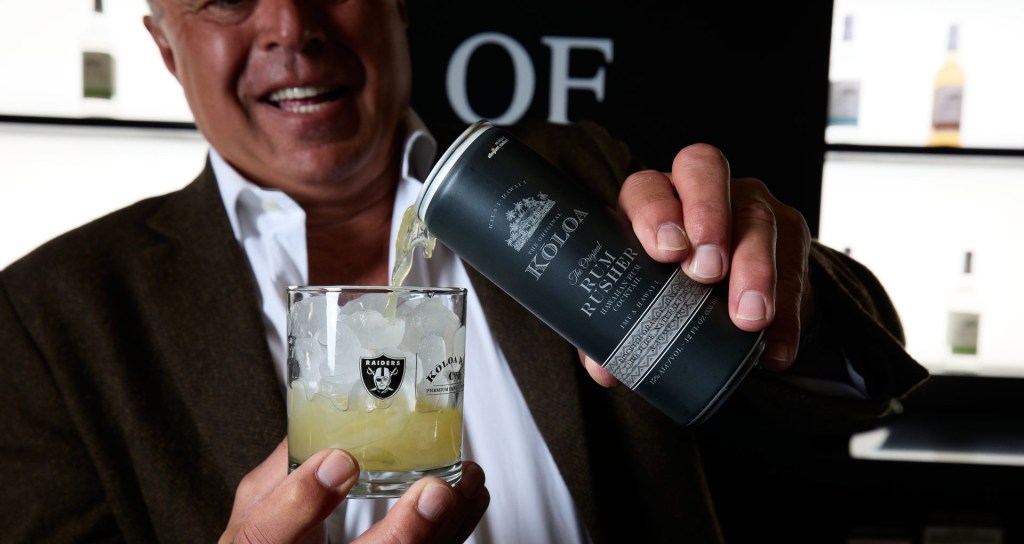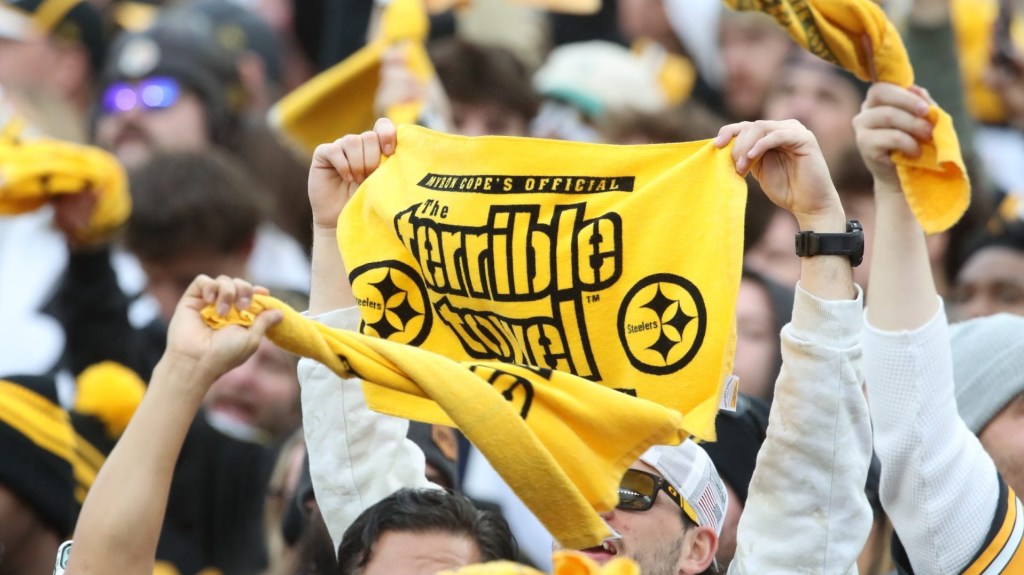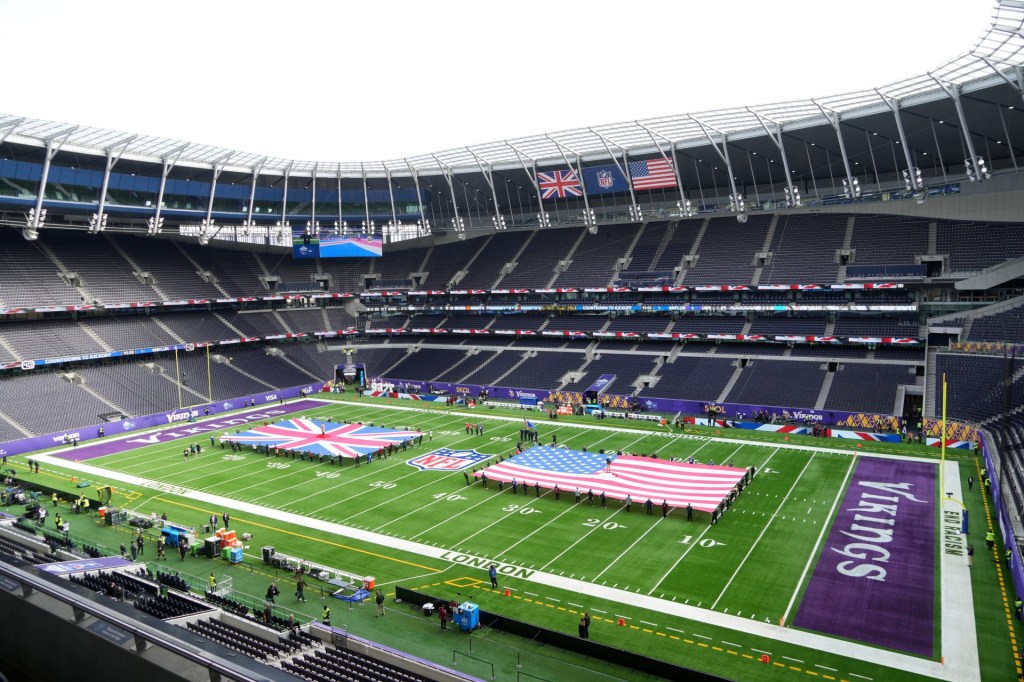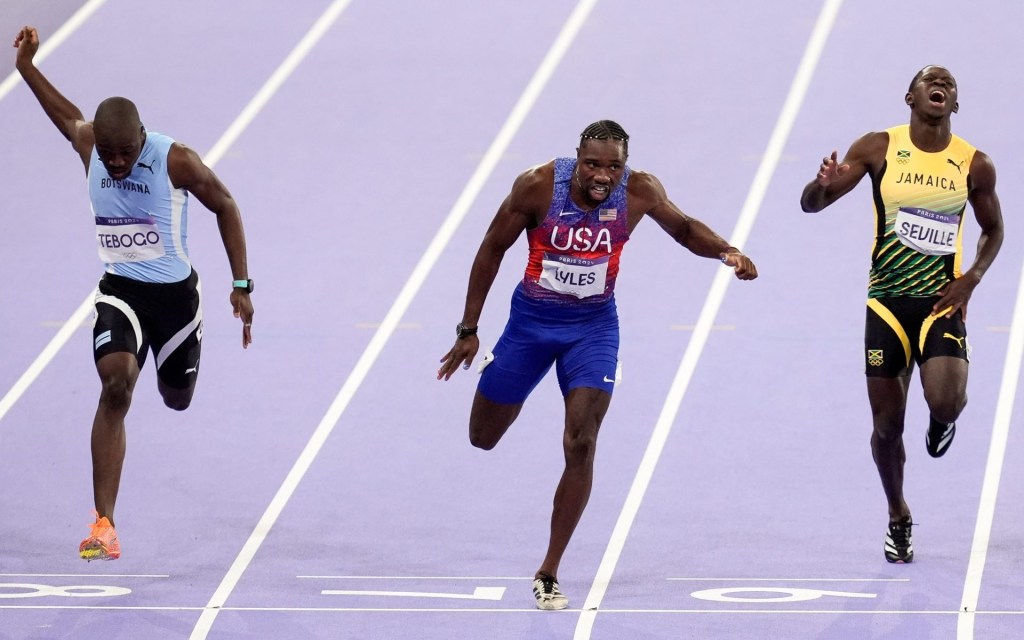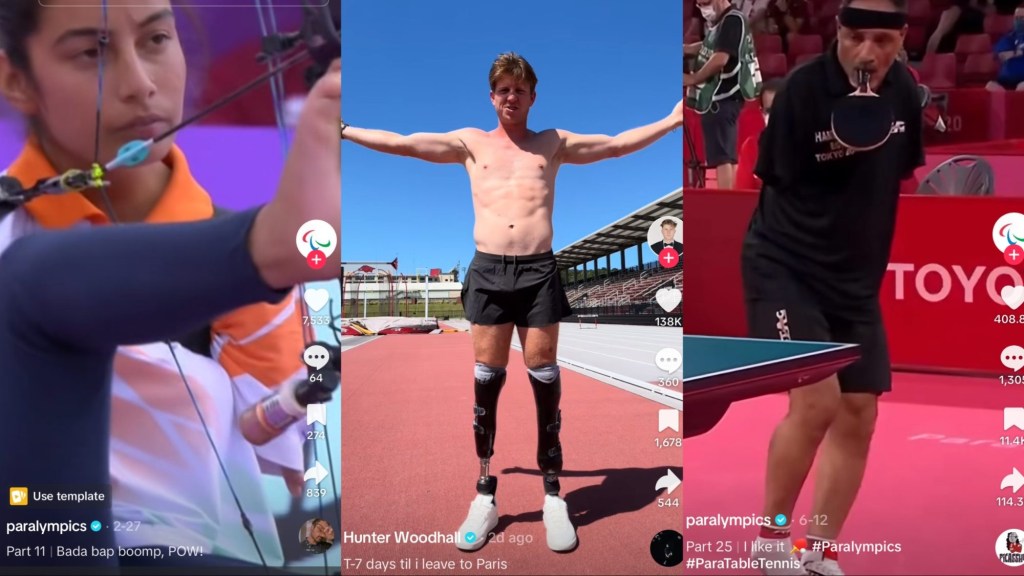Sports served as a rare centralizing force in 2022.
Fans showed up, tuned in, bought merchandise, and, in the U.S., found a growing appetite for sports like Formula 1 and soccer, and activities like pickleball and disc golf. Meanwhile the “Big Four” of the NFL, NBA, MLB, and NHL have never been more valuable.
Media deals reached new heights while sports betting presents a potentially massive revenue stream and stadiums and arenas are being reimagined as economic centers.
While supply chain issues weighed on nearly every part of the global economy and the slow leak of cable subscribers to streaming services continued to upend the media world, sports stood apart for their steadiness.
As the calendar flips to 2023, we look back on a year in which sports’ ability to cross generations and demographics proved ever more important in our culture.
Multibillion-Dollar Franchise Sales
2022 set a new price standard for team sales.
In May, the Premier League’s Chelsea FC were sold to a group led by Todd Boehly for a worldwide record $5.3 billion. Months later, the Walton-Penner family ownership group purchased the Denver Broncos for $4.65 billion — the most for any North American team.
Now, the Phoenix Suns and Mercury will be sold to Mat Isbhia for $4 billion — a record for an NBA team, pending approval.
- Team sale prices are only expected to rise.
- Forbes found in its September report that the world’s 50 most-valuable sports teams are worth 30% more than they were a year prior.
Just before Christmas it was reported the Washington Commanders could sell for a number “well north” of $7 billion. MLB’s Washington Nationals, the Premier League’s Liverpool FC, and the NWSL’s Portland Thorns and Chicago Red Stars are just some of the other teams still exploring sales.
– Abigail Gentrup
Big Tech’s Sports Rights Takeover
Just a few years back, tech giants were more bogeymen than reality in live sports.
Giant streamers were able to pick off cheaper game packages from international leagues, but the U.S. rights for the NFL, NBA, MLB, and MLS were still controlled by linear TV networks.
During the NFL’s media negotiations in 2021, Amazon Prime Video made history by becoming the first all-digital platform to score an exclusive NFL package.
It was a landmark moment. Live sports is one of the last building blocks holding up the aging pay TV model.
Amazon’s $11 billion deal to air “Thursday Night Football” through 2033 opened the door for others:
- In March, Apple made one of its first forays into sports by signing an $85 million annual deal with MLB to stream Friday Night games.
- In June, Apple and Major League Soccer signed a 10-year, $2.5 billion deal to exclusively stream every MLS match starting in 2023.
- The year closed with Google’s YouTube TV snatching the NFL’s Sunday Ticket package via an estimated seven-year, $14 billion deal. Satellite giant DirecTV had controlled the rights for 28 years.
Entering 2023, Amazon and the NBA are exploring ways to collaborate. If the NBA doesn’t renew with ESPN or TNT, look for Amazon to try to bookend its NFL package with a billion-dollar NBA deal.
– Michael McCarthy
Disney’s Succession Theatrics
A shadow CEO. Palace intrigue. Blood in the water. All taking place, incongruously, at the Happiest Place on Earth.
The entertainment industry was rocked the evening of Sunday, Nov. 20 when former Disney boss Bob Iger swooped in after less than a year in retirement to help oust CEO Bob Chapek.
ESPN’s majority owner Disney is one of the most powerful players in sports, controlling tens of billions of dollars in live rights with pro leagues and college sports bodies, ranging from the NHL, NBA, and MLB to the SEC Conference and College Football Playoff.
Iger’s corporate coup against Chapek was the juiciest executive suite shakeup since, well, ex-ESPN CEO John Skipper stepped down in late 2017, due to a cocaine extortion plot.
- As recounted by the Wall Street Journal, Iger’s undermining of Chapek should be a cautionary tale for other new CEOs operating with their predecessor breathing down their neck.
- Iger has agreed to serve as a stopgap CEO for two years. That sets up another bruising succession battle, which, of course, will involve ESPN.
- Given his experience in Hollywood, digital media and sports, ESPN’s 53-year-old chairman Jimmy Pitaro is seen as a natural successor to Iger.
There’s even speculation Disney’s financial woes will force it to spin off ESPN — ending its 25-year corporate history under the Mouse House.
– Michael McCarthy
College Sports’ Most Important Year?
In 2022, college sports experienced seismic shifts that pushed the industry more toward a pro sports-like structure than ever.
On June 30, UCLA and USC shocked the industry by announcing they would join the Big Ten in 2024. Then, the Big Ten inked the largest conference-wide media rights contract in college sports history: a mid-$7 billion deal with CBS, NBC, and Fox.
The Big 12, led by new commissioner Brett Yormark, signed a six-year, $2.28 billion renewal with ESPN and Fox to keep itself afloat.
The first full year of NIL came to a close. Athletes cashed in big — and the sky didn’t fall. Worth almost $1 billion, it was marked by lucrative deals for the biggest stars, memorable social media endorsement campaigns, and the beginning of NIL collectives.
Women’s college sports were at the forefront of the conversation all year.
- The NCAA made improvements to the NCAA women’s basketball tournament — though several structural changes still haven’t been implemented.
- Ratings soared.
- The nation celebrated the 50th anniversary of Title IX, only to see Roe v. Wade overturned the following day — jeopardizing the future ability of countless athletes to participate in sports.
The year ended with the announcement that the College Football Playoff would expand to 12 teams starting in 2024 — a move that will rake in billions for FBS football and allow more parity than ever.
– Amanda Christovich
From Congress to the Courtroom
From Brett Favre to the Washington Commanders to Jon Gruden, Front Office Sports led the coverage when sports intersected with courts this year.
In the spring, FOS broke news of allegations the Commanders used “two books” that painted differing pictures of the team’s finances, along with allegedly holding back ticket revenue from the league.
The heat on Commanders owner Dan Snyder intensified before — and even after — it was announced he’d explore a sale of the team in November.
- The House Oversight Committee deposed Snyder for nearly 11 hours in July as part of its investigation into the team. Snyder “gave misleading testimony about his efforts to interfere” with an outside NFL investigation, according to the final report released earlier this month.
- The team is a defendant in two lawsuits filed by District of Columbia Attorney General Karl Racine. Maryland and the Commanders agreed to a $250,000 settlement. A probe by Virginia’s attorney general remains ongoing.
- Snyder and the Commanders are still subject of a second outside NFL investigation along with one launched by the Department of Justice.
Meanwhile, Favre’s connection to the Mississippi welfare scandal became clearer in 2022. Brands and media companies began to slowly — and quietly — back away from Favre in September as even longtime sponsor Copper Fit paused its relationship with the Hall of Fame quarterback.
Favre has denied he knew the $8 million of funds he was linked to — including $5 million for a volleyball center at his alma mater, the University of Southern Mississippi — came from federal welfare funds.
But a series of FOS reports called Favre’s denials into question.
“That’s horse—t,” said one source involved with the pharmaceutical company Prevacus that Favre backed. “They all knew.”
Gruden’s lawsuit against the NFL survived multiple challenges in 2023. The same for former Miami Dolphins head coach Brian Flores’ racial discrimination lawsuit against the league. Meanwhile, LIV Golf’s lawsuit against the PGA Tour is still more than a year off from a trial.
– AJ Perez
Sports Betting Out of the Shadows
Unsurprisingly, sports betting had a breakthrough year in the United States.
The implementation of mobile sports betting in New York caused a huge spike in revenue:
- At $1.68 billion, Q3 2022 was the highest-revenue quarter in American legal sports betting history.
- Through three quarters, the industry’s $4.78 billion in revenue is already more than the previous full-year record ($4.34 billion in 2021).
The Qatar World Cup boosted those numbers, as the Final between Argentina and France was the second-most bet-on game of the year behind the Super Bowl. The tournament as a whole was expected to generate $1.8 billion in bets in the United States.
The industry also innovated, as Caesars Sportsbook streamed an NFL game for the first time in early December.
Still, sportsbooks are fighting the illegal side of its industry, as Amercians reportedly place $63.8 billion in illegal bets each year.
– Doug Greenberg
The Gaming Industry’s Wild Ride
The video game industry was taken by storm in January when Microsoft announced plans to acquire “Call of Duty” and “World of Warcraft” owner Activision Blizzard in a deal valued at $68.7 billion.
The acquisition would make Microsoft the third-largest gaming company by revenue, but the deal could collapse amid regulatory scrutiny.
- The Federal Trade Commission has sued to block Microsoft’s acquisition of Activision, saying the sale would give Microsoft “both the means and motive to harm competition.”
- On Wednesday, the tech giant filed a response to the suit arguing that its presence within the mobile gaming market is minimal and that blocking the deal would be unconstitutional.
The deal is also under regulatory scrutiny in the U.K., Australia, and the European Union.
Microsoft and Activision weren’t the only gaming giants coming together in 2022. In January, Sony agreed to acquire Bungie — the original creator of “Halo” — for $3.6 billion.
– Justin Byers
Fitness’ Spin Cycle
The fitness industry had major high and lows with game-changing products, major lawsuits involving the biggest players, and personnel switch-ups.
Peloton was at the forefront: the company hired a new CEO, cut thousands of jobs, introduced a rowing machine, struck deals with other retailers for the first time, hiked prices, cut in-house manufacturing, and settled infringement lawsuits.
While gyms including Planet Fitness rebounded, other fitness companies including Soulcycle and Tonal were forced to cut their workforces as customers’ pandemic fitness routines changed.
But fitness is still drawing heavy investment. Lululemon announced a fitness subscription, Virgin Active, Hydrow, and Aviron raised capital, and new club concepts were debuted.
– Abigail Gentrup
Sportswear Giants Put Their Foot Down
Two of the largest sportswear giants killed some of their biggest respective partnerships over antisemitism.
In October, Adidas cut ties with Ye, formerly known as Kanye West, after he went on multiple antisemitic tirades. The company ceased production of its Yeezy brand and stopped payments to Ye. Adidas said it would lose $246 million in profits by the end of 2022 due to the decision.
Just a few weeks later, Nike suspended its relationship with Kyrie Irving after the Nets guard posted a movie that peddled antisemitic conspiracy theories.
In December, Nike permanently ended its deal with Irving, and stopped production of the “Kyrie 8s.” Irving was temporarily suspended from the Nets, but reinstated soon after issuing an apology.
– Amanda Christovich
The Stadium Boom
The arms race to develop first-class facilities for sports teams reached a new level in 2022.
Since 2000, taxpayers have spent roughly $4.3 billion toward costs associated with new stadiums and arenas for pro sports teams, per CNBC. That number will continue to rise.
Earlier this year, the Tennessee Titans announced plans to build a new domed stadium in Nashville that is estimated to cost $2.2 billion. The 1.7 million-square-foot stadium will feature a translucent roof and will allow Nashville to host major events, including the Super Bowl.
The Buffalo Bills are also getting a new home stadium that is projected to cost $1.4 billion.
Expected to open for the 2026 season, the facility will receive $850 million in funding from New York’s state budget. The stadium will be open-air and could have a capacity of 60,000-62,000.
NFL franchises aren’t the only teams getting new digs. The Philadelphia 76ers plan to build a new $1.3 billion arena, while the Oakland A’s have proposed a $12 billion waterfront stadium complex.
– Justin Byers
Megastars…Mega Money
Major League Baseball made headlines with its extravagant contracts as usual: Aaron Judge led the way with his landmark nine-year, $360 million contract with the New York Yankees.
Carlos Correa’s bizarre saga is ongoing: The prized shortstop opted out of his Minnesota Twins pact, agreed to a record infielder deal (13-year, $350M) with the San Francisco Giants, then agreed to a new deal (12-year, $315M) with the Mets when he failed his physical — only to fail his physical with New York, too.
In the NFL, Russell Wilson and his massive $245 million Denver Broncos contract is quickly looking like one of the worst front office decisions in league history. The Colorado Avalnche’s Nathan MacKinnon became the NHL’s highest-paid player by AAV. The Saudi-backed LIV Golf made lots of players very rich via guaranteed money.
And with the U.S. House of Representatives passing the Equal Pay for Team USA Act, the USWNT and USMNT will split $13 million from the latter’s advancement to the knockout stage at the Qatar World Cup.
– Doug Greenberg
Top Tier Events
February’s Winter Olympics in Beijing nearly feel like an afterthought after one of the most epic sports calendar years.
Super Bowl LVI, which saw the Los Angeles Rams edge out the Cincinnati Bengals 23-20 at SoFi Stadium, proved again why the event has sports’ biggest gravitational pull in the U.S.
- Conventional metrics put viewership numbers at over 112 million.
- A survey conducted by the NFL and Nielsen, which sought to count people who watched the game in groups and at restaurants and bars, found that 208 million watched the game in the U.S. alone.
- A staggering 90% of U.S. TVs that were on during the game were tuned in.
Formula 1’s arrival in Miami in May didn’t draw those kinds of numbers, but took on a life of its own in a different way. The event proved far bigger than the race, with the likes of Michael Jordan, Serena Williams, Tom Brady, David Beckham, and a laundry list of celebrities descending on Miami for the race.
In June, the Golden State Warriors won their fourth title in eight years by topping the Boston Celtics, and Steph Curry solidified his legacy with his first NBA Finals MVP.
- According to Nielsen, the six-game series averaged 12.4 million viewers — up 22% from the previous year.
- The clincher averaged 14 million.
The year was topped off by a World Cup in Qatar that was equal parts stunning and controversial. 3.6 billion people watched at least some part of the tournament, as Argentina’s Lionel Messi secured the only missing piece to his legendary career with his first World Cup title.
– Owen Poindexter

























